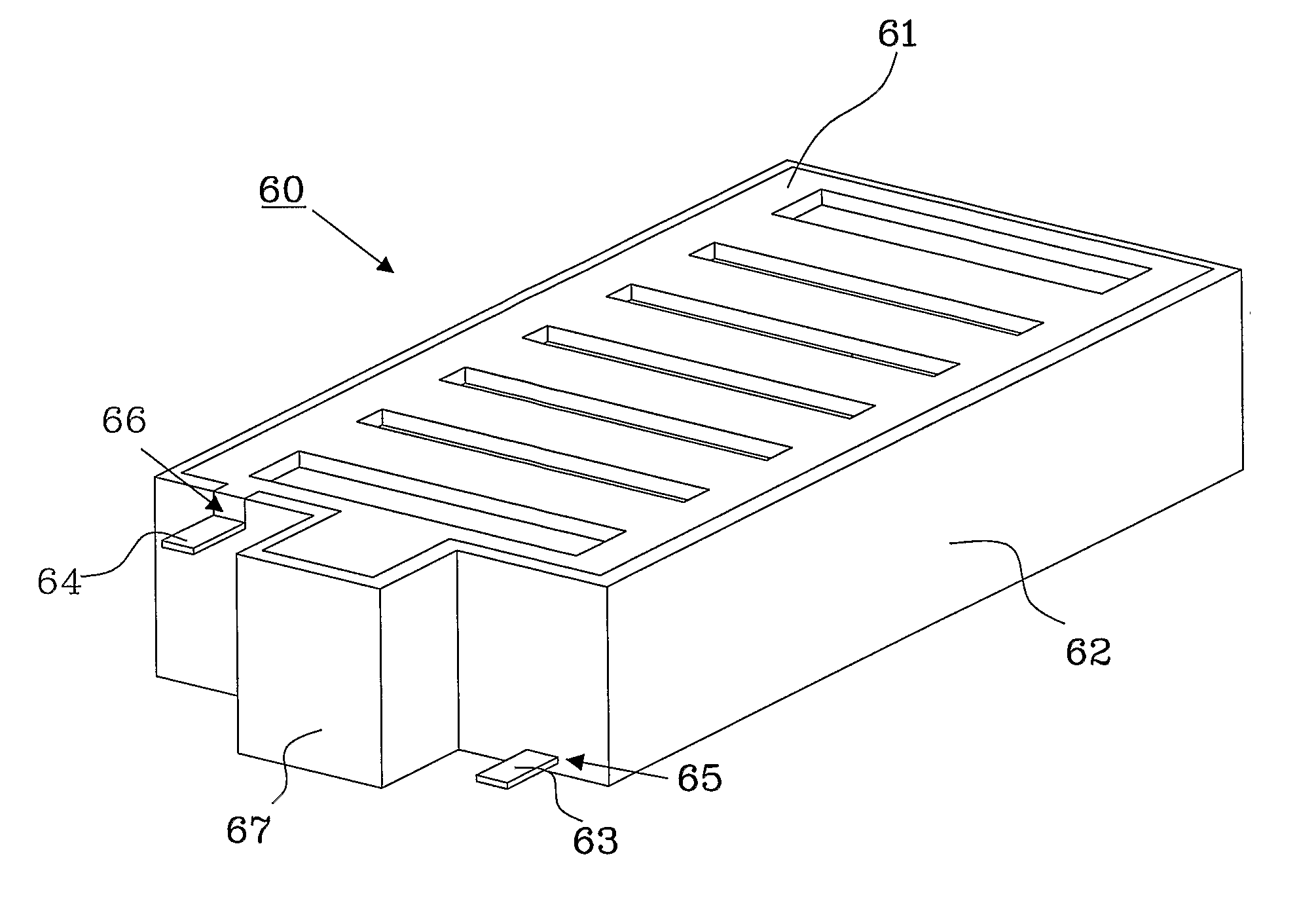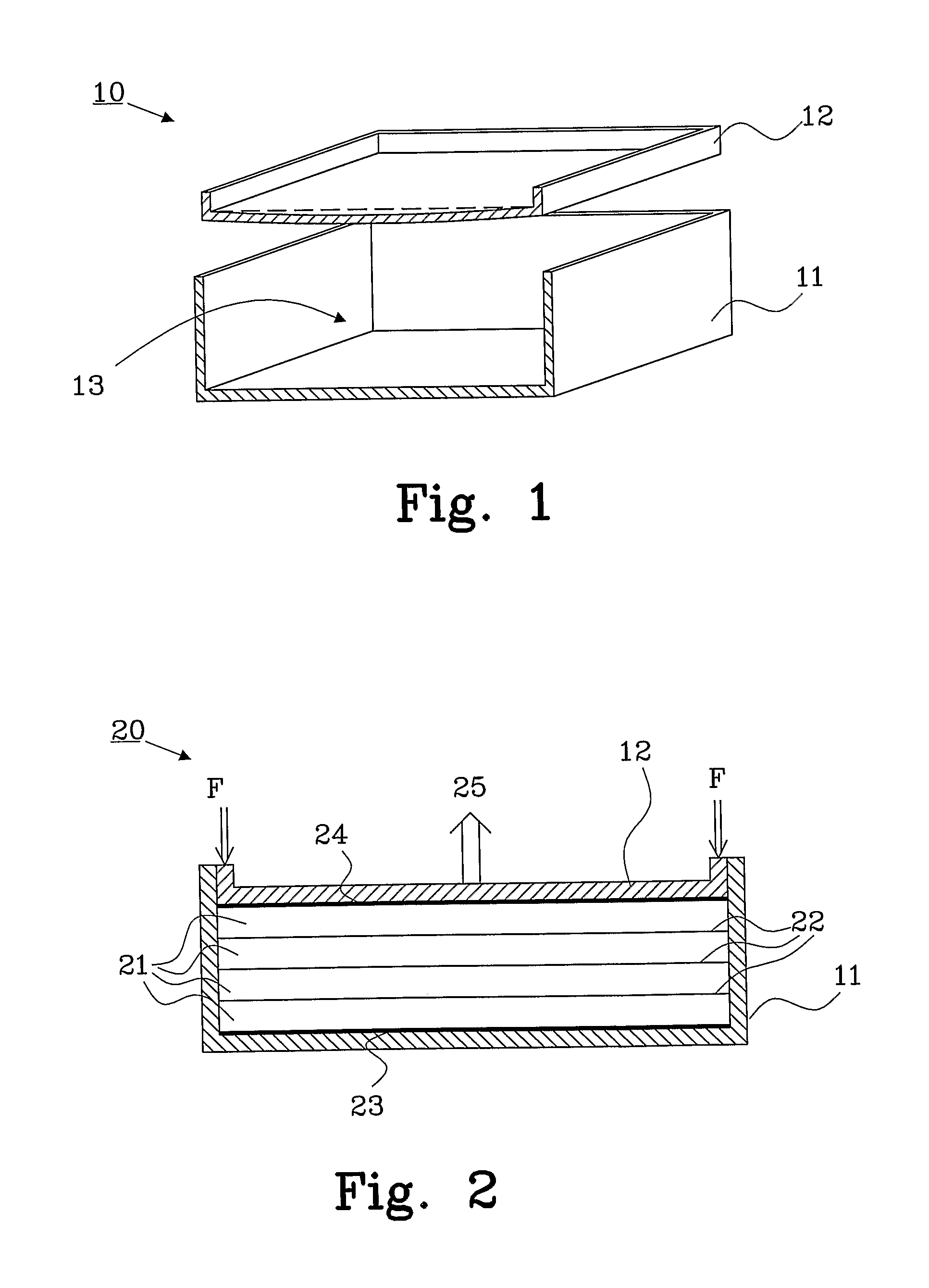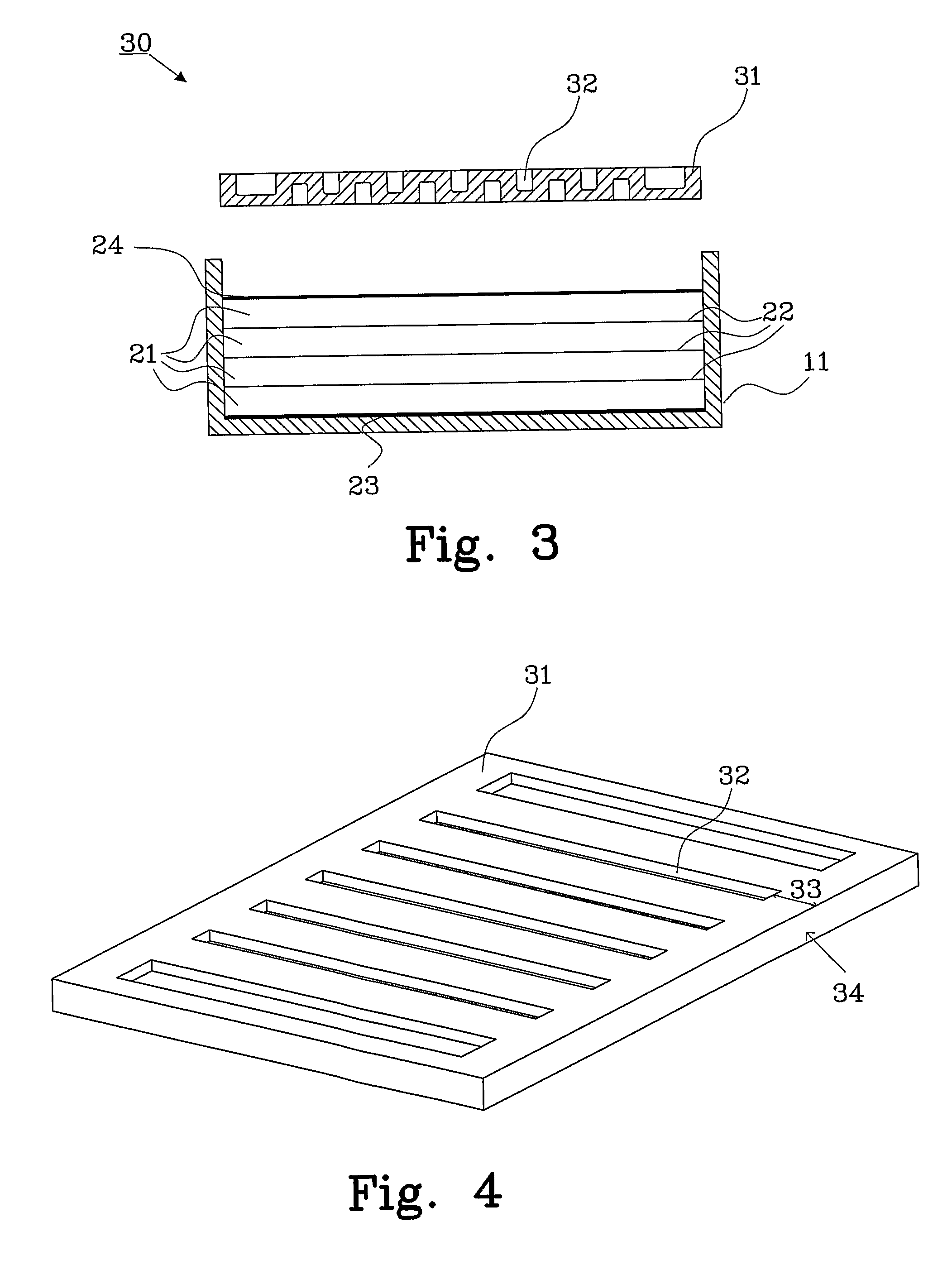Casing For a Sealed Battery
a bipolar battery and sealed technology, applied in the field of sealed bipolar batteries, can solve the problems of affecting the solution is not cost effective for mass manufacturing, and the finished battery assembly can be detrimental to the cost, volume and weight of the resulting battery assembly, etc., to achieve the effect of adequate and adequate uniform pressur
- Summary
- Abstract
- Description
- Claims
- Application Information
AI Technical Summary
Benefits of technology
Problems solved by technology
Method used
Image
Examples
first embodiment
[0034]the present invention is described in connection with FIG. 1, which is a partially cross-sectional view of a non-joined battery casing 10 comprising a lower part 11 and an upper part 12. The upper part 12 is designed to be inserted into the lower part 11 and fasteners (not shown) or a welding will be provided to hold the part together. Battery cells (not shown) arranged in a cell stack will be assembled in the space 13 that is created inside the joined parts 11, 12. Small holes for battery terminal access (not shown) may be provided in the upper part 11 and lower part 12.
[0035]In this example the upper part 12, i.e. the lid, is provided with an arrangement that will prevent the casing from breaking and maintaining adequate and adequately uniform pressure across the cell stack. By preloading the part with a spring force, which is the result of creating an inverted pre-bowed shape of the upper part 12, a mechanically compliant arrangement is provided together with an arrangement...
second embodiment
[0039]FIG. 3 shows a casing according to the present invention, comprising a case 11 and a lid 31 that has a corrugated shape, each corrugation is denoted 32. FIG. 3 illustrates the non-joined casing in connection with a bipolar battery 30 during the assembling process, where identical parts of the battery have been denoted with the same reference numerals as in FIG. 2.
[0040]The corrugation in the lid 31 face will reduce the stress concentration by a factor of 2-4 times for the same load compared to prior art lids. Depending on the material and area of face, it does have some impact on the stiffness of the face, but it is not always stiffer than a non-corrugated face. The goal of the corrugation is to reduce the magnitudes of stress concentrations, so that they are safely below the material's yield stress.
[0041]FIG. 4 shows a perspective view of the lid 31 in FIG. 3, where the corrugations 32 are shown more clearly. The corrugations do not extend across the complete width of the lid...
fourth embodiment
[0044]FIG. 7 shows a cross-sectional view of a battery 55 with a casing provided with optional compliant members 52 and 53. The assembly comprises a lower case part 11, a first optional compliant member 52, a positive endplate 23, a cell stack of four cells 21, a negative endplate 24, a second optional compliant member 53 and an upper case part 41. The optional compliant members will function as an extra compliant part in the battery in case the compliance in the casing is not sufficient.
[0045]FIG. 8 shows an assembled casing 60 provided with means to connect each endplate inside the battery casing with a positive terminal 63 and a negative terminal 64 without interfering with the resilient and stress distribution function of the lid 61 and the case 62. A hole 65 is provided in the case 62 for the positive terminal connector 63 and a cut-out 66 is provided in the case for the negative terminal connector 64. Furthermore, a divider 67 is provided in the case 62 that will prevent direc...
PUM
| Property | Measurement | Unit |
|---|---|---|
| thickness | aaaaa | aaaaa |
| pressure | aaaaa | aaaaa |
| shape | aaaaa | aaaaa |
Abstract
Description
Claims
Application Information
 Login to View More
Login to View More - R&D
- Intellectual Property
- Life Sciences
- Materials
- Tech Scout
- Unparalleled Data Quality
- Higher Quality Content
- 60% Fewer Hallucinations
Browse by: Latest US Patents, China's latest patents, Technical Efficacy Thesaurus, Application Domain, Technology Topic, Popular Technical Reports.
© 2025 PatSnap. All rights reserved.Legal|Privacy policy|Modern Slavery Act Transparency Statement|Sitemap|About US| Contact US: help@patsnap.com



